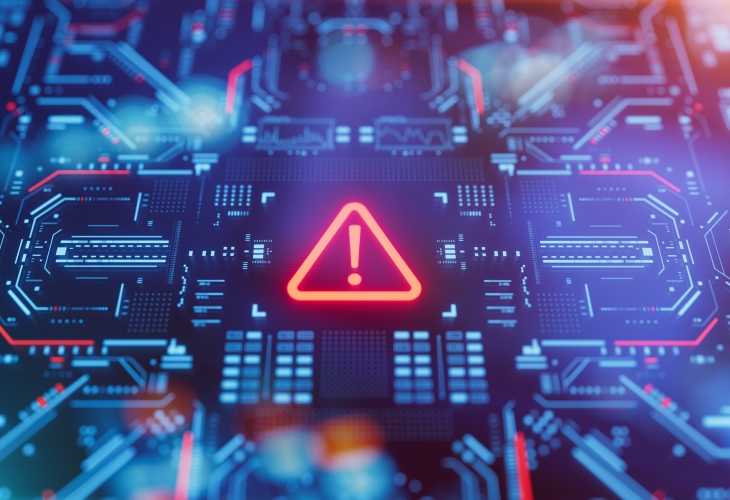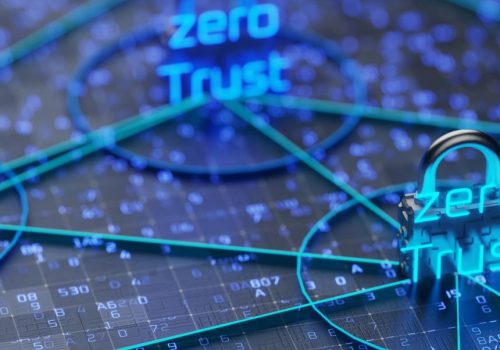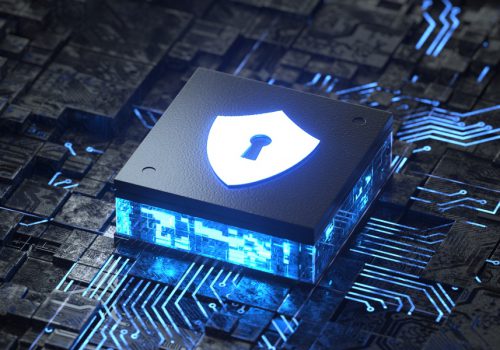CEOs and CFOs shoulder a profound responsibility for shielding their organizations from the everevolving landscape of cyber threats. New and looming US and global legislation adds proof of cyber risk handling and mitigation to the cybersecurity footprint. Effectively managing these risks and ensuring regulatory compliance hinges on the principles of Governance, Risk Management, and Compliance (GRC). GRC acts as the vital bridge between the technical intricacies of cybersecurity and the overarching strategies necessary to safeguard an organization’s systems, networks, devices, and sensitive data
If that is not complicated enough, the disconnect between how EMEA (Europe, Middle East, and Africa) and the United States handles cyber risk management could not be further apart. EMEA takes action and tells the tech companies what they need to do, while American companies seem to make non-prescriptive or vague efforts to align. This dynamic is often making cyber risk management murky instead of about protection, which is what it should be about.
The Three Main Components of GRC
Governance: Governance is the cornerstone of GRC and revolves around decision-making. It establishes the framework for decision-making and accountability within an organization. This component defines roles and responsibilities related to cybersecurity, ensuring that leadership comprehends its role in mitigating cyber risks. Governance also sets the tone for the organization’s cybersecurity culture, emphasizing security and compliance.
Risk Management: At the core of GRC lies risk management, which identifies, assesses, and prioritizes potential threats to digital assets. In the context of cybersecurity, it helps organizations comprehend the threats they face and their impact on the business, facilitating the development of effective risk mitigation strategies.
Compliance: Compliance ensures adherence to relevant laws, regulations, and industry standards. In the realm of cybersecurity, compliance encompasses various requirements, such as data protection regulations (e.g., GDPR) and industry-specific cybersecurity standards. Beyond legal compliance, it demonstrates a commitment to data privacy and security to customers and partners.
Understanding the GRC-Cybersecurity Connection
While cybersecurity primarily focuses on the technical aspects of protecting digital assets, GRC serves as the compass that guides the entire organization in understanding and communicating how to achieve this. Think of cybersecurity as the “how” and GRC as the “why” and “what” – the essential framework that ensures everyone in the organization is on the same page.
GRC in cybersecurity centers around risk awareness, proof of handling, and knowledge. It integrates multiple aspects of an organization to create a cohesive system that not only focuses on achieving objectives but also addresses risks and acts with integrity at the organizational and supply chain levels. This approach empowers businesses to make informed collaborative decisions regarding data security risks swiftly, thereby mitigating the risk of compromising privacy across multiple organizations involved in the privacy and contractual rights of consumers and businesses.
Several frameworks and directives guide organizations in specific areas of governance, risk management, and compliance (GRC) within information technology, information security, and cybersecurity. These frameworks offer structured methodologies, guidelines, and resources to develop and implement effective GRC and cyber risk management programs. Examples include ISO/IEC 37301, ISO/IEC 27000 Family, NIST 800 Family, SOC2, NIS 2 Directive, Cyber Essentials Plus, GDPR, Basel III for banks, HIPAA for healthcare, and FISMA for federal agencies, among others.

Benefits of GRC in Cybersecurity
Risk Mitigation: GRC empowers IT departments to comprehend the full scope of cybersecurity risks and document the strengths and limitations of the current security program, allowing organizations to take proactive measures to minimize vulnerabilities.
Regulatory Compliance: GRC plays a pivotal role in ensuring organizations remain compliant with evolving regulations, providing ample time to plan and respond effectively.
Audit Support: Robust GRC practices ensure processes and best practices are well-documented, showcasing that the organization’s house is in order, which is crucial during audits.
Data Privacy: GRC helps organizations stay current with evolving privacy regulations, navigating the complex web of global data privacy legislation and regulations seamlessly.
Implementing Governance, Risk Management, and Compliance as a cornerstone of your cybersecurity strategy can yield substantial benefits. It fortifies your organization’s defenses, instills trust among stakeholders, and ensures resilience against evolving cyber threats and regulatory landscapes. Partnering with a GRC services provider can maximize the effectiveness of your cybersecurity efforts and safeguard your organization’s future.
The GRC Maturity Model
The GRC (Governance, Risk Management, and Compliance) Maturity Model is a framework used by organizations to assess and enhance the maturity of their GRC processes. It typically consists of several maturity levels, ranging from ad hoc or reactive processes to optimized and continuously improved practices. The model helps organizations identify their current state of GRC and provides a roadmap for progressing to higher levels of maturity. Advancing through these levels can lead to improved risk management, compliance, governance, and resource efficiency. GRC maturity models are adaptable, customizable, and often include assessment tools and resources. They emphasize ongoing assessment and continuous improvement in GRC practices, contributing to organizational resilience and the achievement of strategic objectives.
Challenges of GRC Implementation
In a presentation to Secure the Village, Dr. Vinton Cerf, widely known as one of the Fathers of the Internet explains that we have these problems because “we have crappy software”. He continues to explain that over the last 80 years, we still have not learned how to write software that does not have exploitable bugs and that there is confusion about what is to be secured. Universities must do better at establishing a mindset and footprint of secure software development to keep sensitive data sacred.
Implementing GRC programs in organizations offers substantial benefits but also presents several challenges. These challenges include navigating complex and evolving regulations, integrating scattered GRC processes, securing sufficient resources, overcoming employee resistance to change, managing data effectively, handling complex IT systems, IT governance, ensuring scalability, communicating and training effectively, managing vendor and third-party risks, addressing data privacy and security concerns, aligning organizational culture with GRC objectives, effective change management, measuring program effectiveness, managing costs, and promoting continuous improvement. Successful GRC implementation requires commitment, leadership, and a systematic approach to program development and maintenance, ultimately enabling organizations to proactively manage risks, achieve compliance, and enhance governance.
What Is the Executive’s Role in GRC?
When cybersecurity has become political, it leaves countries wondering how they can trust American technology companies. Regulation can build political trust but a voice of understanding and implementing frameworks like NIS 2 and ISO/IEC 27000 will go a long way in acknowledging that Europe is more advanced in this area. It will also help elevate American cyber risk management to the level that it should be at.
Executives play a crucial role in overseeing and ensuring the mindset shift about cyber risk management becomes proactive instead of reactive. While we cannot eliminate risk, we can minimize it. Their responsibilities in GRC encompass several key areas:
Risk Analysis and Oversight: Executives must have a deep understanding of the organization’s cyber risk landscape. They should be aware of potential risks that could impact the achievement of strategic objectives and be actively engaged in discussions regarding risk appetite and tolerance levels.
Setting the GRC Strategy: Executives are responsible for defining the strategic direction of GRC within the organization. This includes establishing GRC objectives and priorities aligned with the overall business strategy. They must communicate these priorities to the entire organization to ensure that GRC efforts are integrated into day-to-day operations.
Allocating Resources: Executives have the authority to allocate the necessary resources, including budget, personnel, and technology, to support GRC initiatives. Adequate resources are essential for implementing effective risk management, compliance, and governance programs.
Creating a GRC Culture: Executives are instrumental in fostering a culture of GRC throughout the organization. They set the tone by demonstrating a commitment to ethical behavior, compliance with regulations, and proactive risk management. Their actions and attitudes influence how employees at all levels perceive and prioritize GRC.
Monitoring GRC Performance: Executives are responsible for regularly assessing the performance of GRC initiatives. They should receive reports and updates on risk assessments, compliance activities, and governance practices to ensure that the organization’s GRC efforts are on track and achieving desired outcomes.
Compliance Oversight: Executives are accountable for ensuring that the organization complies with all relevant laws, regulations, and industry standards. They must be aware of changing regulatory environments and support efforts to adapt compliance practices accordingly. Governance Leadership: Executives lead the governance structure within the organization. This involves participating in or overseeing board meetings, committees, and other governance bodies. They ensure that governance practices in IT and cybersecurity align with the organization’s values and objectives, as well as global data protection requirements.
Risk-Based Decision-Making: Executives often face critical decisions that involve risk. They should use a risk-informed approach in decision-making, weighing the potential benefits against the associated risks. This approach helps avoid undue risks while capitalizing on opportunities.
Crisis Management: In the event of a crisis or major risk event, executives are responsible for crisis management and response. They must lead efforts to mitigate the impact of the crisis on the organization’s reputation, operations, and stakeholders.
Communication and Transparency: Executives play a pivotal role in communicating the organization’s GRC efforts and performance to external stakeholders, such as investors, regulatory agencies, and customers. Transparent communication about GRC practices helps build trust.
Leading by Example: Perhaps most importantly, executives must lead by example. Their commitment to ethical behavior, integrity, and adherence to GRC principles sets the standard for the entire organization.
When executives prioritize GRC, employees throughout the organization are more likely to do the same.
Accountability: Executives are ultimately accountable for the success or failure of GRC initiatives within the organization. They should establish key performance indicators (KPIs) and metrics to measure GRC effectiveness and be prepared to take corrective actions as needed.

How Do I Get Started?
There are three things that you can do to get started: use technology to prevent the misbehavior that we are trying to inhibit like cryptography and two-factor authentication, instill consequences as a part of post-HOC enforcement, and create and enforce common digital norms of behavior such as people should not attack the core infrastructure of the internet including routers, optical fiber lines, interfere with Wi-Fi, or denial of service attacks, to name a few.
Proactive cyber risk management has become not just a strategic imperative but a fundamental necessity for the survival and prosperity of modern businesses. Here are the essential steps and strategies that you can employ to initiate and champion a proactive cyber risk management program within your organization.
Educate Yourself – Understand the critical role that proactive cyber risk management plays in the organization’s success. Recognize that cyber threats are continually evolving and can have severe consequences.
Assemble a Dedicated Team – Appoint a dedicated cybersecurity team or designate cybersecurity responsibilities to existing employees. This team should include a Chief Information Security Officer (CISO) or equivalent, if possible.
Conduct a Risk Assessment – Start with a comprehensive cybersecurity risk assessment to identify and prioritize potential threats. This assessment will provide insights into the organization’s unique vulnerabilities and risks.
Set Clear Objectives – Define clear and measurable cybersecurity objectives that align with the organization’s overall business goals. These objectives should guide your cybersecurity strategy.
Develop a Strategy – Create a formal cybersecurity strategy that outlines the organization’s approach to mitigating cyber risks. This strategy should include measures to protect data, systems, and networks.
Conduct Regular Employee Training – Conduct regular cybersecurity training for employees. Make them aware of best practices, how to identify phishing attempts, and their role in maintaining security.
Incident Response Planning – Acquire cyber insurance to mitigate financial risks associated with a cybersecurity breach. Develop a robust incident response plan that outlines how to handle a cybersecurity breach. Ensure all employees know their roles during a security incident.
Compliance with Regulations – Stay informed about relevant data protection and cybersecurity regulations that apply to your industry. Ensure compliance with these regulations to avoid legal consequences. Implement continuous monitoring of your systems and networks. Detect and respond to threats in real-time to minimize damage.
Budget Allocation – Allocate a sufficient budget for cybersecurity initiatives. Ensure that resources are available for technology upgrades, training, and staff.
Remember that proactive cyber risk management is an ongoing commitment. It requires continuous improvement, adaptation to emerging threats, and the integration of cybersecurity into the organization’s overall business strategy. CEOs and CFOs must recognize their pivotal roles in GRC, as their leadership ensures effective risk management, compliance, and governance.
The synergy between Governance, Risk Management, and Compliance (GRC) and cybersecurity is critical in navigating the complex terrain of cyber threats and regulatory requirements.
Despite challenges, GRC implementation empowers organizations to proactively manage risks, achieve compliance, and strengthen governance, bolstering their resilience against ever-evolving threats. Partnering with GRC services providers and embracing the GRC Maturity Model can further enhance GRC practices, ensuring organizations are well-prepared for the challenges of the digital age.









